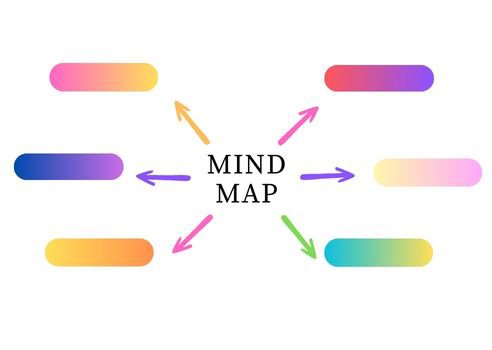Word count: 719 words
Reading time: About 3 minutes
Today I answer a question from a reader who is struggling with the demands of academic writing. My response hinges on mindmapping Read on to learn more….
A reader named Autumn Alexander submitted the following question to the Publication Coach:
“I’ve trained as a journalist and have worked as a feature writer and columnist in print media throughout my nine lives. But a shift into thesis mode and scholarly composition has left me swatting at TMI, Too Much Information. Mindmapping seems futile in this case, for the digressions soon accumulate into crowding clouds. The net effect? Confusion, obfuscation, and despair. Do you have any ideas for efficiency when projects demand writing — uncomfortably — outside preferred genres?”
Autumn, thank you for your question, which gives me the chance to beat the drum for mindmapping yet again. My teenage children like to joke that if they ask me about any problem, I will always suggest mindmapping as the answer. Not true, kids! I’ll only suggest it for writing problems.
For you, Autumn, I do indeed counsel mindmapping. (See the e-booklet you should have received when you signed up for this newsletter.) If mindmapping has been futile in the past, you may have been making one of the five mistakes commonly committed by those new to the practice. Please check to see if any of these errors apply to you:
1) Are you treating your mindmap like an outline? The whole point of mindmapping is to avoid the pitfalls of outlining (mainly, thinking in a linear, non-creative way), so be sure to keep your mindmap nice and loosey goosey. Don’t be overly concerned about which circles link with which. Don’t worry about the order in which you write things down. This may sound a bit gross, but I like to describe mindmapping as “vomiting onto the page.” A mindmap gives you the chance to empty your brain, not organize it. The purpose? Inspiration!
2) Are you doing only one mindmap for a very large project? While you can start with one mindmap for a large project like a book or thesis I recommend doing many additional mindmaps — perhaps as many as several a day. Again, the purpose is not to organize, it’s to provoke the aha! experience that really makes you feel like writing. If you have an overall concept of what you are writing each time you sit down to write, then that should help you swat away the tendrils of TMI and keep you focused.
3) Are you thinking your writing is “too short” for a mindmap? I used to produce a series of 150-word articles for a client. Did I mindmap them? Sadly, no. But, then one day I was foiled after spending 90 frustrating minutes trying to write one of these difficult little pieces. Desperate, I decided to mindmap it. Creating the mindmap took me less than a minute. I then wrote the article in less than five. The time-success ratio convinced me that there’s no such thing as an article too short for mindmapping!
4) Are you spending too much time staring into space, not knowing what to write? Don’t mindmap too early. Instead, make sure you have done most, if not all, of your research and, even more importantly, ensure you’ve given yourself time to think about your findings. I like to go for a walk before mindmapping — it gives my brain a chance to wander, along with my legs.
5) Are you limiting yourself to just the “facts”? The words and phrases you write down should also include feelings, anecdotes, images and metaphors that occur to you. These will help make your writing more interesting, colourful and lively — and will help inspire you to want to write.
Thank you, Autumn, for submitting your question to Ask the Pubcoach. (I realize this name makes it sound as though I should serve drinks on the side, but I’m using it because it’s shorter, snappier and it’s also my Twitter handle — @pubcoach.)


